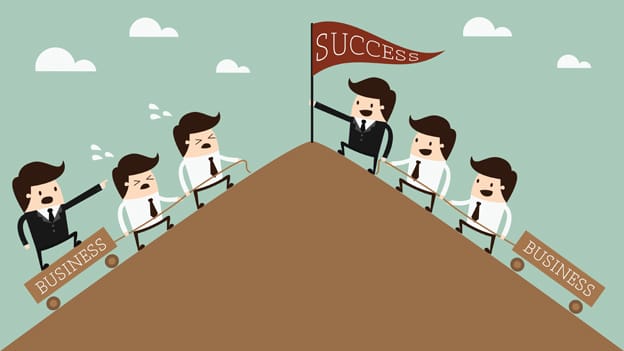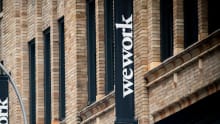The Disciplined Leader Fights Prevailing Mindsets

Business transformation is nevereasy. Leaders will have to makedecisions despite all problems
Decisiveness and determination are key to growth and sustainability of the organisation.
In our organizational life, we come across situations that pose the challenge of ‘to be or not to be’. During the phase of transformation, a leader has to juggle with views and counter views. There are optimists and cynics. The business of transformation is never easy. It involves confusion, conflict, risks and occasional self-doubt. There is always a risk of making many colleagues unhappy. Yet, an intelligent leader will have to make a call notwithstanding all these problems. Lack of decisiveness can be a serious flaw in a leader, retarding the growth of an organization. Unless a leader is willing to take risks, he will never be able to do what he is capable of doing.
When you begin transformation, a number of predictable and unpredictable problems arise. Bowing down to these problems can decelerate the organizational growth. Facing the problems head on with sheer guts and determination, is the stuff of effective leaders.
During my tenure in BOB, I faced innumerable situations where I was advised by my well-wishers against undertaking risky ventures. But, with due respect to their suggestions, I did not hesitate to move forward, since I was convinced with the ideas for change.
One such experience and a landmark decision for the bank was when immediately after assuming charge as CMD, I planned the rebranding exercise - a revamp involving the change of the bank’s logo, which was an emblem of identity since years. Majority of my colleagues in the top management cautioned me about the timing of the proposed change when there were many other pressing priorities to be pursued.
But, I believe, some decisions need to be taken even if they go well beyond the bounds of usual advice, rationale and analysis. Such decisions are guided simply by one’s own inner voice. I was guided by my belief that the timing was just right to create a new persona for BOB, to regain the confidence of customers and the larger public. The decision of rebranding gave maximum mileage to the bank’s business, in spite of some initial hiccups.
Envisioning the future, a leader has to show great determination in not just removing obstacles from his vision, but to fight prevailing mind-sets, legacy attitudes, hierarchy, bureaucratic structure, and long-standing traditions. At times, a leader is a loner in propagating the change. But does he flounder at those instances or does he delay his plans? No. Risk taking is a verse in the leader’s Bible for doing business. Many organizations are saddled with accumulated problems on many fronts because at some point of time the leaders failed to decide for the future. Decisiveness and determination are key to growth and sustainability of the organization. Leaders who dither to take decisions, put their organizations on to the path of decline. Decisive leaders are focused and show great amount of resilience.
Leaders also need to demonstrate high levels of personal discipline that includes time management, respect for the time of others and adherence to the promises made. Most people at the top are found grumbling about shortage of time in attending to many important things that they would like to. In fact, there is always deficit of intentions than time. In my work life, I have met some excellent leaders who are able to do multiple things including pursuing their hobbies and maintaining a happy balance between work and family. I have also met a number of senior executives who leave office late at night and in the process, not only create disequilibrium in their own work and life, but also in the lives of their subordinates. Effective leaders are invariably effective time managers.
In 2008, during my brief professional engagement at Asian Institute of Management at Manila, I met an extraordinary gentleman Washington Sycip, an 85 year old gentleman, the Chairman Emeritus of the Asian Institute of Management and who also headed a large conglomerate. Once, he gave me an appointment to meet in his office at 8 am. I had kept my fingers crossed because he was returning only at midnight after a long haul flight from the US. But to my surprise, sharp at 8 in the morning, he received me in his office, smiling and joyous, and there was no trace of fatigue on his face. He told me that, for years, he followed a discipline of starting work at 8 am. I was simply flabbergasted on seeing the true model of self-discipline. Such encounters and meetings helped me inculcate discipline in both, my professional and personal life.
For the top man, keeping time is the most crucial aspect of his effectiveness. Not keeping time, frequently changing appointments and meetings, elongating meetings, habit of late sitting or late coming can be very demoralizing for the colleagues, subordinates as well as for customers. It also impairs the reputation of the company. When the top man does not follow personal discipline, it is likely to percolate down with adverse consequences. The other dimension of personal discipline relates to personal behavior. Etiquette and manners apart, simple things like dealing with subordinates and colleagues with dignity and elan is something that leaders need to be conscious about. Short tempered leaders often run the risk of inhibiting their colleagues to openly contribute in terms of ideas and come out with creative solutions.
A sensitive aspect of discipline, which often remains undiscussed but highly speculated in corporate corridors, relates to apparent abuse of official position for personal gains. Official travel to synchronise with personal conveniences, arranging board meetings to facilitate attending marriage or any other function in the family of directors and such other acts dilute the credibility of the leadership. Most complaints and RTI enquires in the public sector relate to such areas of indiscretion on the part of leadership. Leaders need to be doubly conscious as they are always under scrutiny of their colleagues, with thousand eyes looking at them and any departure from the expected norms of behavior and conduct is instantly noticed. Deficit in exemplary behavior at the top is often the cause of pent-up disillusionment in the ranks. Egregious violation of ethical behavior in a leadership position can do incalculable damage to corporate reputation.
Leadership is therefore not about power and perquisites, but about responsibility and accountability. This is the biggest challenge of leadership.
Dr. Anil K. Khandelwal is an HR professional who made it to CEO of Bank of Baroda (BOB), a staid large public sector bank and turned it out in a short tenure of 3 years. In this column, he shares his code of leadership that helped him achieve extraordinary business results. His book Dare to Lead (Sage 2011) captures his experience of the turnaround. Dr. Anil Khandelwal can be contacted at akk1948@gmail.com










